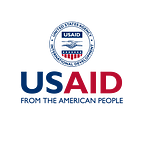Five Reasons Why Physical Rehabilitation is Essential for Successful Inclusive Development
How USAID support to conflict-affected countries strengthens physical rehabilitation services that optimize functioning, promote well-being, and fuel community engagement
Worldwide, over 2.4 billion people would benefit from physical rehabilitation, including access to wheelchairs, prostheses, hearing aids, and other assistive technologies.
While this number seems daunting, it will likely rise due to growing numbers of people with injuries as a result of conflict, natural disasters, and road traffic crashes, as well as aging and non-communicable diseases like diabetes and COVID-19.
This is a particular challenge in developing countries with limited access to and availability of these services. Lack of access to physical rehabilitation can negatively impact an individual’s physical functioning, quality of life, and well-being, and is associated with decreased productivity, lower household income levels, and reduced educational outcomes across entire populations.
Since 1989, USAID’s Leahy War Victims Fund has addressed this critical need by investing in the development of much-needed physical rehabilitation services and helping local health systems improve the quality and expand the availability of these services. USAID has ensured civilian victims of conflict with mobility injuries, persons with disabilities, and others in need can benefit from optimized physical functioning and improve their quality of life.
Over the last three decades, the Leahy War Victims Fund has provided approximately $312 million in assistance to more than 50 countries. In 2020, the fund supported more than 53,000 people to access physical rehabilitation services and 694 civil society organizations and physical rehabilitation clinics, and provided training to 6,957 physical rehabilitation service providers in 16 countries.
What is physical rehabilitation?
The global community defines rehabilitation as a set of interventions designed to enable persons with health conditions to optimize their functioning — an individual’s strength, balance, and mobility — in interaction with their environment. Physical rehabilitation includes services, such as physical, occupational, and speech and language therapy; and access to prosthetics, wheelchairs, and other assistive technologies. Physical rehabilitation enables individuals of all ages to optimize functioning in order to fully engage in activities of daily life and maximize their well-being.
REHABILITATION is essential for ALL
Any person, at any age, with a health condition that limits functioning should have access to rehabilitation. It is a misconception that physical rehabilitation is exclusively for persons with disabilities, or should only be provided as a highly specialized service. Individuals with access to physical rehabilitation services have shorter hospital stays, improved functioning, and better overall health outcomes.
REHABILITATION is essential for injured victims of conflict
According to the 2019 Oslo Action Plan and the 2020 Landmine Monitor Report, the number of civilians injured by explosive ordinances, small arms and light weapons, and other causes worldwide continues to rise. The impact of such injuries can be life changing. Without access to physical rehabilitation, victims often experience loss of function as a result of amputations, shrapnel wounds, and other traumas.
REHABILITATION is essential to optimize functioning
People of all ages and life stages with injuries or conditions can benefit from physical rehabilitation services, which optimize functioning, allowing individuals to re-engage in meaningful livelihood, educational, cultural, and civil activities.
REHABILITATION is essential to comprehensive health care services
Access to health care is essential for healthy and prosperous communities, and fundamental to achieving the United Nations Sustainable Development Goals. Physical rehabilitation is a key pillar of comprehensive essential health care services and is particularly important as populations age; noncommunicable diseases become increasingly prevalent; and people continue to sustain injuries from conflict, natural disasters, and work- or road traffic-related incidents.
REHABILITATION is essential to strengthening health systems
As health care services worldwide continue to become more holistic, inclusive, and comprehensive, physical rehabilitation is essential to fully strengthen health systems across lower- and middle-income countries. To effectively measure the strength of health systems, we must move beyond traditional programming and the use of mortality and morbidity indicators, and look toward optimizing functioning and well-being.
A Path Forward
USAID supports programs that work to integrate physical rehabilitation services into health systems. In Georgia, for example, a program is training the next generation of physical therapists to expand Georgian citizens’ access to quality, affordable physical rehabilitation services and assistive technologies within the health system.
Physical therapist Gvantsa Aladashvili states: “Today, I know how to evaluate a patient; I know what a patient-oriented clinical practice should look like. With the help of the project I completely changed my professional approach.” Learn more about this USAID-supported training program.
Forging strategic partnerships with governments, international and national organizations, training and research institutes, professional associations and communities, families and individuals through activities such as Learning, Acting and Building for Rehabilitation in Health Systems (ReLAB-HS) and ATscale, the Global Partnership for Assistive Technology will continue to be essential to these efforts.
Through partnership-fueled activities, USAID continues to support access to and availability of physical rehabilitation to optimize functioning, promote well-being, and strengthen community engagement and participation for all people.
About the Author
Kirsten (Kiki) Lentz is the Senior Advisor for Rehabilitation in the Inclusive Development Hub of USAID’s Bureau for Democracy, Development, and Innovation.
